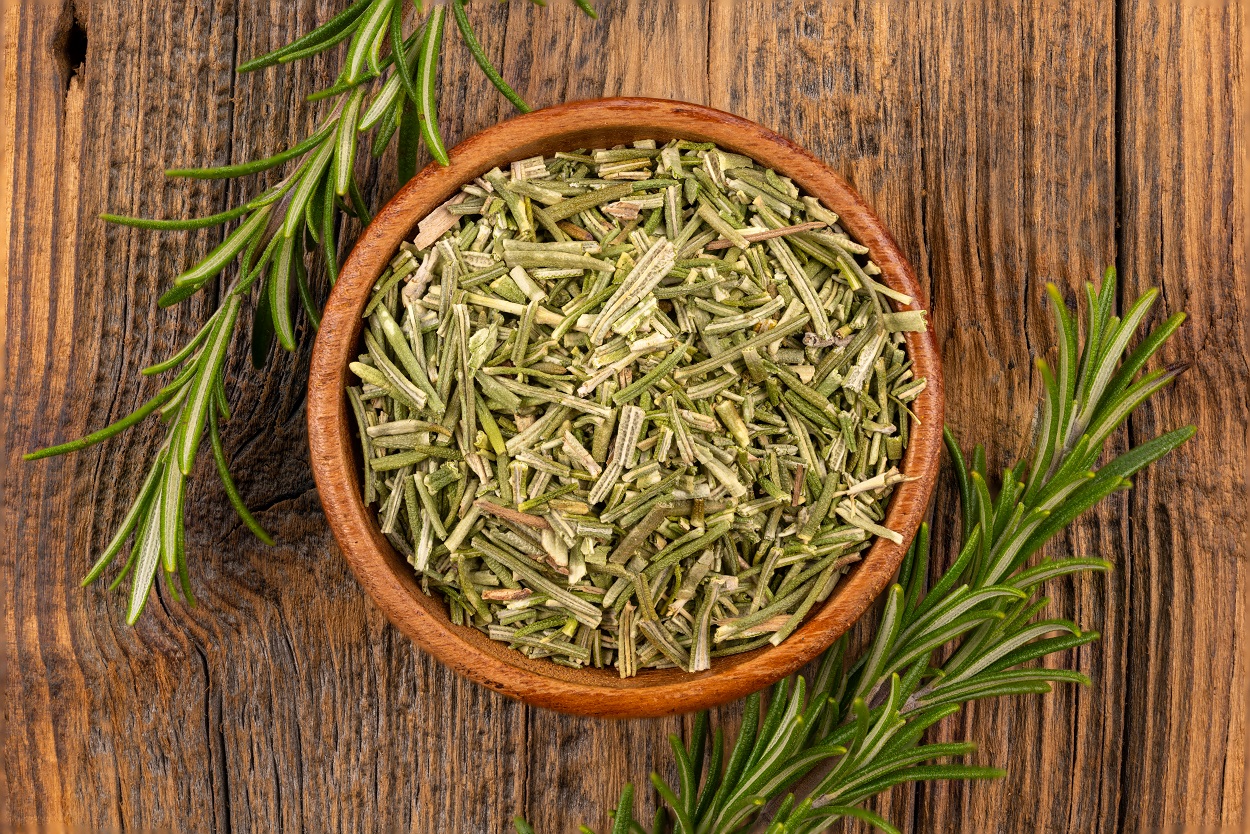Rosemary Rosmarinus officinalis dried Leaves in bulk packaging shipped in 20″ FCL container
Login to view prices
Common name: Rosemary.
Latin name: Rosmarinus officinalis L.
Family: Apiaceae (Umbelliferae)
Other names: Engl.: rosemary, dew of the sea. Deu.: Rosmarin. Suom.: rosmariini. Sven.: rosmarin. Fran.: romarin. Pharm.: folia anthos, folia roris marini
The botany of rosemary is rather complicated, as there exist, according to Turill, several species of the genus Rosmarinus with a number of varieties and forms:
Rosmarinus officinalis L. var. genuina Turrill. Occuring in most Mediterranean countries, the Canary Islands, the Azores, and Madeira.
Botanical Origin:
Common name: Rosemary.
Latin name: Rosmarinus officinalis L.
Family: Apiaceae (Umbelliferae)
Other names: Engl.: rosemary, dew of the sea. Deu.: Rosmarin. Suom.: rosmariini. Sven.: rosmarin. Fran.: romarin. Pharm.: folia anthos, folia roris marini
The botany of rosemary is rather complicated, as there exist, according to Turill, several species of the genus Rosmarinus with a number of varieties and forms:
Rosmarinus officinalis L. var. genuina Turrill. Occuring in most Mediterranean countries, the Canary Islands, the Azores, and Madeira.
Description:
It is an evergreen, perennial shrub native to the chalky, calcareous hills along the Mediterranean Sea. Reaching a height of up to 1.8 meters, the plant is characterized by linear, narrow leaves whose undersides are matted with thick hair.
The erect stems are divided into numerous long, slender branches bearing many sessile, opposite leaves, about 2.5 cm long, smooth and green on the surface, woolly, whitish, and glandular beneath. The flowers appear as pale blue verticillasters. The leaves and flowering tops contain a volatile oil which can be isolated by steam distillation.
Range & Habitat:
The reported life zone for rosemary is 9 to 28 ºC with an annual precipitation of 0.3 to 2.7 meters and a soil pH of 4.5 to 8.7. The drought tolerant plant grows in rocky to sandy soils, as long as there is adequate drainage and a minimum soil depth of about 0.2 meters. The pale-blue flowers can develop throughout the growing season, although profuse blooming occurs during late winter or early spring. Rosemary has no serious pests or diseases. The plant is not cold hardy
Rosemary grows wild and abundantly in lime soil, over extended areas, on arid, sunny mountain slopes, especially in Spain, Serbia, Croatia, Tunisia, Morocco, and Southern France. The price of the oil distilled from wild plants has always been low; therefore, rosemary is not cultivated, except for ornamental purposes.
In Tunisia; the linear species, R. officinalis L., bears pale, purplish-blue flowers; the varieties flexuosus and laxiflorus, white flowers. The plant grows wild and abundantly over vast areas of Tunisia’s coastal ranges, and especially in the low mountains of central Tunisia, where it occurs in the form of dense bushes and tufts about 18 in. high. On the calcareous soils of the plateaus and plains of more than 400 m. altitude rosemary covers large sections and grow all year round.
Planting & Cultivation:
The price of the oil distilled from wild plants has always been low; therefore, rosemary is not cultivated, except for ornamental purposes.
Harvesting and Preparing for the Market:
In Spain rosemary oil is produced largely between March and July, but in the event of a heavy demand, the oil is distilled also during winter.
In Serbia & Croatia , in order to preserve the wild plant growth, government regulations provide that each section may be exploited every third year only, with a two years’ respite between the harvests. Collection is accomplished by cutting the twigs with sickles, taking care not to injure the plants. The twigs are clipped according to the development and age of the shrub, to spare the weaker plants and permit them to recuperate. The cut material is dried until the leaves fall of the twigs. In literature, this process has occasionally been referred to as fermenting or curing, but actually it means only drying to facilitate removal of the leaves from the twigs; it is sometimes concluded by a light threshing.
In Tunisia; the harvest is conducted all the year round (except for the rainy season) and reaches its peak in May & June. In July the work usually slows down. Field distillation is usually in stills of the direct fire type; some however are operated with steam generated in a separate steam boiler.
Export Markets:
We export our products to many countries all over the world. USA, France, Germany, China, Malaysia, Algeria, Morocco, Indonesia…etc
Quotation:
- Incoterms: FOB
- Quantity: one 20″ FCL Container Minimum
- Specification: 100% natural and Pure quality
- Documentation: COA, MSDS, TDS, GC Peaks
- Packaging: Bulk Packaging
- Payment terms: TT in advance to Our bank account
- Lead time: Shipping through 10 days from receipt of the payment.
- Sea Shipping Time: 35 days
- Air shipping time: 10 days
Quality Certificates:
- ISO 9001-2015
- ISO 22000-2005
- GMP accredited by AQC Middle East FZE
- KOSHER Certificate
- Halal Certificate
- ORGANIC Certificate accredited by CERES GmbH Germany
- NOP Certificate accredited by CERES GmbH Germany
- Egyptian Ministry of Health Permission
Contact us please to receive other supporting documents for our Oils :
- COA
- MSDS
- TDS
Branding Services
We also can do customized packaging for you to pack whatever size you like. We can help in designing labels, selecting good packets or bags. We deliver integrated solutions under your brand..
Organically Certified product Available upon request
Additional information
| Weight | 12000 kg |
|---|---|
| Dimensions | 610 × 244 × 259 cm |
| Country of Origin | Morocco |
| Ship from | Morocco |
| 20 Container Capacity H | 8000 kg |
| Herbal Part Types | Crushed leaves Large cut, Dried Whole Leaves, Crushed leaves Medium cut, Crushed leaves small cut, Powder |
| Herbs Packaging | PE bags 25 Kg, PE Bags 50 kg, Paper Bag 25 kg, Paper Bag 50 kg |
| Cultivation Type | Organic, Conventional |
| HS Code | 09109990 |
| Custom Branding & Packaging | Yes, OEM Custom banding, designing and packaging are available for that product |
| Herbal OEM Packaging | Kraft Bag, Kraft Bag with transparent window, Kraft bag with open side, Glass Jar, Glass jar Spices with holed lid, Tea bag, Tea bag with paper bag, Tea Cylinder packaging, Tin Packaging |
| Documentation & Certifications | Allergen Free Certificate, Bovine Spongiform Encephalophathy (BSE) Certificate, GMO Certificate, GRAS Status Statement, Herbal Origin Statement, Organic Certificate, Pesticide Residual Certificate, Halal Certificate, KOSHER Certificate, Researches & Studies, Certificate of Analysis (COA), Technical Data Sheet (TDS) |
-
Login to view prices
Anise Pimpinella anisum Seeds in Bulk packaging Shipped in 20″ FCL Container
Login to view prices Read more -
Login to view prices
-
Login to view prices
-
Login to view prices
-
Login to view prices
Calendula officinalis Marigold Flowers in Carton Shipped in 20″ FCL Container
Login to view prices Read more -
Login to view prices












